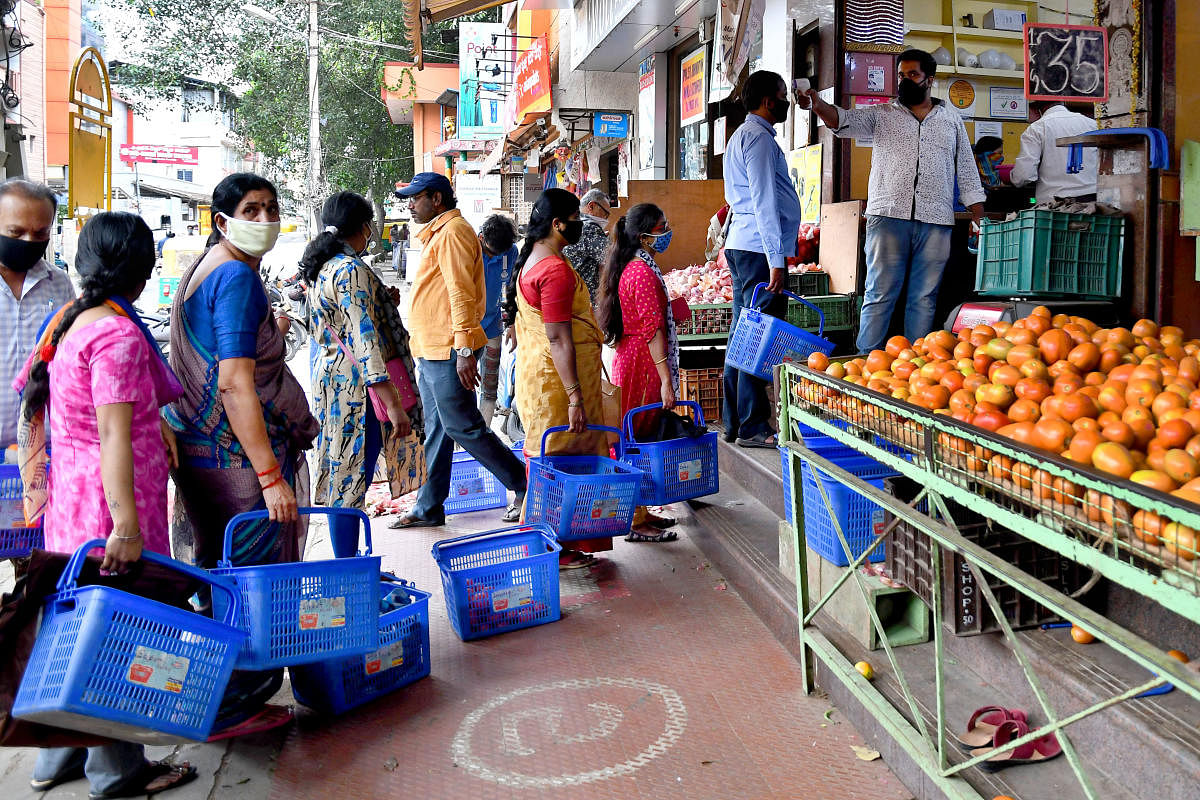
Scientists working on predictive analysis of the Covid-19 outbreak have warned that India’s epidemic could continue to rise into next year.
The new mathematical model considers various parameters such as new infections, spread, impact of quarantine, government policies, health infrastructure, recovery and deaths, but hinges upon one key parameter — how well people follow social distancing norms.
“The key point we keep coming back to again and again is how social distancing or lack of it affects how and when the curve flattens,” said associate professor Dr Sashikumaar Ganesan, Chair of the Department of Computational and Data Sciences, Indian Institute of Science (IISc), who helped develop the model based on Partial Differential Equation (PDE).
Meanwhile, eminent virologist Dr T Jacob John said he thinks the virus will achieve endemic status in India by December or February 2021.
The PDE model examines the outbreak across five scenarios, including the current trend, better scenario, worst scenario, current trend with Sunday lockdown and current trend with Sunday and Wednesday lockdown.
The scientists initially said that the “current trend” scenario applied to India. Here, there is no long-term lockdown but strict social distancing measures are enforced. But then, at the start of June, something started to go wrong. The numbers that were being reported in the country began to more closely mirror the model’s “worst case scenario.”
“About 30 days ago, the nationwide numbers being reported began to more closely match the worst case scenario, which we thought was the extreme scenario,” Dr Ganesan said.
This scenario operates on the principle that social distancing is being improperly done and that there is no lockdown.
Running the scenario shows that there will be 82 lakh active cases in India until March 2021, out of a total of 6.18 crore total infections. Within this tally, 49.65 lakh total cases will be in Karnataka out of which 32 lakh will be active. More importantly, the curve is shown to continue upwards up to March 2021, which is the limit of the model’s prediction.
An independent epidemiologist working with the state government said that he agreed with the IISc model that the epidemic would extend into 2021.
Covid to become endemic
Meantime, Dr T Jacob John, celebrated virologist and Professor Emeritus, Christian Medical College, said that based on earlier projections that the peak would hit in August, he believed that the epidemic would end in December or before. Now, he said he thinks that following the peak and down-slope of the epidemic curve, the virus will achieve endemic status in India by December or February 2021.
“Curve flattening is meant to indicate delayed and stunted peak but compared to what? That is the problem. If the peak is delayed beyond August, we could say the curve was flattened. If peak was reached after four months of the epidemic (April-July) in August, there is no flattening. However, if delayed beyond August, some flattening. But we should note that epidemic transitioning to endemic should not be mistaken for curve-flattening,” he said.
Meantime, Professor Gautham Menon of Ashoka University who helped develop another well-known mathematical model, INDSCI-SIM, said it was not advisable to use models to make long-term projections. “Given that the situation is in flux and that new restrictions are being imposed or relaxed regularly, no single model's predictions should be relied on over a long term,” he said.